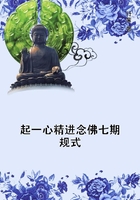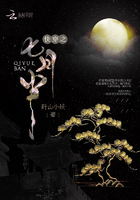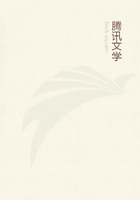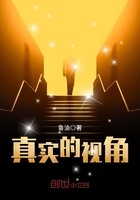The differences of birds compared one with another are differences of magnitude, and of the greater or smaller development of parts. Thus some have long legs, others short legs; some have a broad tongue, others a narrow tongue; and so on with the other parts. There are few of their parts that differ save in size, taking birds by themselves. But when birds are compared with other animals the parts present differences of form also. For in some animals these are hairy, in others scaly, and in others have scale-like plates, while birds are feathered.
Birds, then, are feathered, and this is a character common to them all and peculiar to them. Their feathers, too, are split and distinct in kind from the undivided feathers of insects; for the bird's feather is barbed, these are not; the bird's feather has a shaft, these have none. A second strange peculiarity which distinguishes birds from all other animals is their beak. For as in elephants the nostril serves in place of hands, and as in some insects the tongue serves in place of mouth, so in birds there is a beak, which, being bony, serves in place of teeth and lips. Their organs of sense have already been considered.
All birds have a neck extending from the body; and the purpose of this neck is the same as in such other animals as have one. This neck in some birds is long, in others short; its length, as a general rule, being pretty nearly determined by that of the legs.
For long-legged birds have a long neck, short-legged birds a short one, to which rule, however, the web-footed birds form an exception.
For to a bird perched up on long legs a short neck would be of no use whatsoever in collecting food from the ground; and equally useless would be a long neck, if the legs were short. Such birds, again, as are carnivorous would find length in this part interfere greatly with their habits of life. For a long neck is weak, and it is on their superior strength that carnivorous birds depend for their subsistence.
No bird, therefore, that has talons ever has an elongated neck. In web-footed birds, however, and in those other birds belonging to the same class, whose toes though actually separate have flat marginal lobes, the neck is elongated, so as to be suitable for collecting food from the water; while the legs are short, so as to serve in swimming. The beaks of birds, as their feet, vary with their modes of life. For in some the beak is straight, in others crooked; straight, in those who use it merely for eating; crooked, in those that live on raw flesh. For a crooked beak is an advantage in fighting; and these birds must, of course, get their food from the bodies of other animals, and in most cases by violence. In such birds, again, as live in marshes and are herbivorous the beak is broad and flat, this form being best suited for digging and cropping, and for pulling up plants. In some of these marsh birds, however, the beak is elongated, as too is the neck, the reason for this being that the bird get its food from some depth below the surface. For most birds of this kind, and most of those whose feet are webbed, either in their entirety or each part separately, live by preying on some of the smaller animals that are to be found in water, and use these parts for their capture, the neck acting as a fishing-rod, and the beak representing the line and hook.
The upper and under sides of the body, that is of what in quadrupeds is called the trunk, present in birds one unbroken surface, and they have no arms or forelegs attached to it, but in their stead wings, which are a distinctive peculiarity of these animals; and, as these wings are substitutes for arms, their terminal segments lie on the back in the place of a shoulder-blade.
The legs are two in number, as in man; not however, as in man, bent outwards, but bent inwards like the legs of a quadruped. The wings are bent like the forelegs of a quadruped, having their convexity turned outwards. That the feet should be two in number is a matter of necessity. For a bird is essentially a sanguineous animal, and at the same time essentially a winged animal; and no sanguineous animal has more than four points for motion In birds, then, as in those other sanguineous animals that live and move upon the ground, the limbs attached to the trunk are four in number. But, while in all the rest these four limbs consist of a pair of arms and a pair of legs, or of four legs as in quadrupeds, in birds the arms or forelegs are replaced by a pair of wings, and this is their distinctive character. For it is of the essence of a bird that it shall be able to fly; and it is by the extension of wings that this is made possible. Of all arrangements, then, the only possible, and so the necessary, one is that birds shall have two feet; for this with the wings will give them four points for motion. The breast in all birds is sharp-edged, and fleshy. The sharp edge is to minister to flight, for broad surfaces move with considerable difficulty, owing to the large quantity of air which they have to displace; while the fleshy character acts as a protection, for the breast, owing to its form, would be weak, were it not amply covered.
Below the breast lies the belly, extending, as in quadrupeds and in man, to the vent and to the place where the legs are jointed to the trunk.
Such, then, are the parts which lie between the wings and the legs. Birds like all other animals, whether produced viviparously or from eggs, have an umbilicus during their development, but, when the bird has attained to fuller growth, no signs of this remain visible.
The cause of this is plainly to be seen during the process of development; for in birds the umbilical cord unites with the intestine, and is not a portion of the vascular system, as is the case in viviparous animals.

